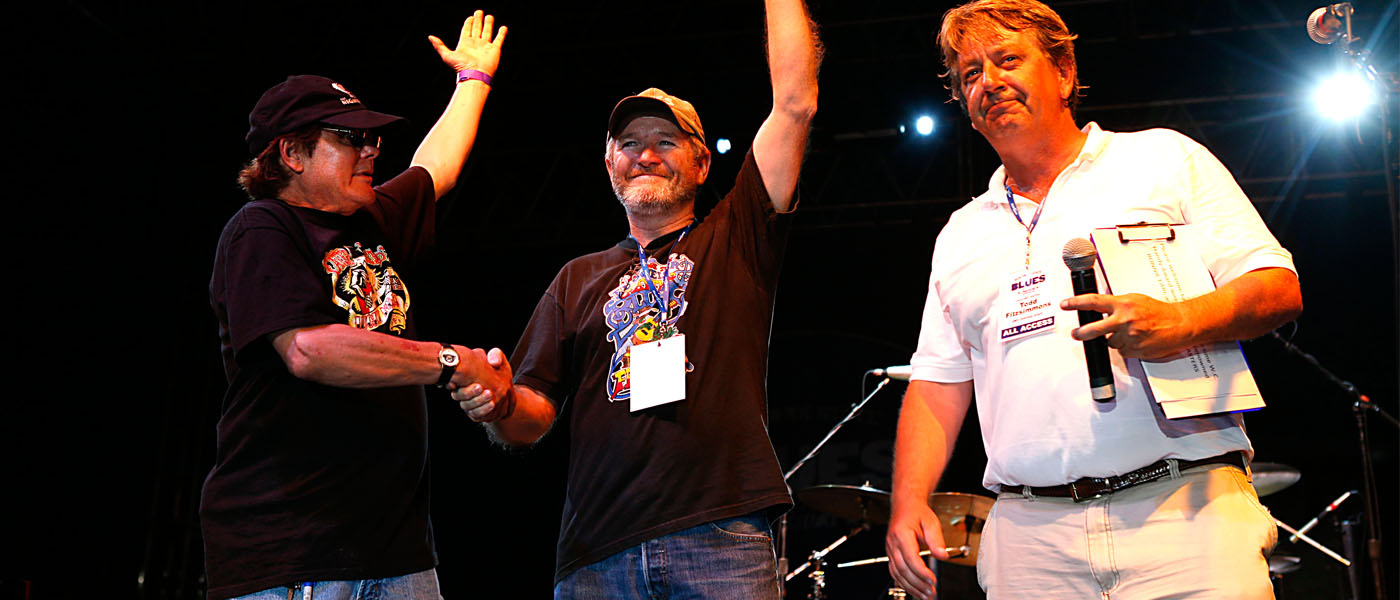The past few years have been tumultuous for the New York State Blues Festival. After experiencing tremendous success with the 2011 edition at the Inner Harbor, the 2012 fest ended in debt and disappointment. The financial obstacles were so grave that the planned 2013 edition was scrubbed.
Hope springs eternal, however: The fest’s website, nysbluesfest.com, proudly reads, “The New York State Blues Festival will return in summer 2014.” Founding member and festival director Austin Jimmy Murphy asserts this is the case.
“My goal is to bring it back,” Murphy says. “Let’s pick up where we left off and continue with the cultural heritage it’s created. It’s so great for the city and for everybody. It’s a community event that people who enjoy all kinds of music attend. People would plan their vacations around the Blues Fest at its high point. People from around the world came. I think in two or three years we’ll be right back on top.”
Murphy’s optimism is impressive, especially given the $30,000-plus debt hole he’s attempting to plug. Yet after successfully running the festival from 1992 to 2003, bringing acts like Mick Taylor, John Mayall, Little Milton and Canned Heat to the Salt City, Murphy seems more than prepared to face the challenge.
An Auburn native, Murphy spent most of his life in Nedrow. He always had a love of blues music, and has since gone on to play it as well. He lived in Austin, Texas, during the early 1980s, where he saw blues fests come and go, and in 1990, after moving back north, he and a handful of Central New Yorkers trekked to Chicago’s blues festival.
“I thought, ‘Everyone’s going to Chicago for a festival and we’re halfway between the East Coast and Chicago,’” he recalls. “We already had the Jazz Fest and I had started a blues society around that same time in Syracuse, so we started meeting every Wednesday and planning a blues fest.”
Murphy asked sponsors such as Budweiser to help jump-start the fest. At the time, the brewer had a big red tent in Armory Square (where the Blue Tusk sits) and hosted music all summer. Murphy approached Bud and it donated 10 kegs of beer. Then he talked to management at the Hotel Syracuse, who offered ballrooms and the lobby in exchange for nothing more than the bar business the event would draw. Armory Square clubs also pitched in.
By the late 1990s, Murphy’s festival was featuring 16 stages and venues; and 65 acts each year. “Some of the old T-shirts from 1999 and before that,” he explains, “names you wouldn’t believe came to this.”
Murphy also cites key player “Stereo” Steve Becker, the music promoter who helped secure big sponsors, including Starbucks, Verizon and American Express. Their donations of $5,000 to $40,000 a pop “really put the Blues Festival to the top,” Murphy says. “I really need to give {Becker} credit. We were doing well, but we exploded with him.”
In 2004, Murphy took a position with the El Paso Opera as managing director and left for Texas, where his wife was raised. He handed the festival’s reins to Bernie Clarke after the 2003 edition, yet was barely involved in 2004’s fest.
“I got shuffled out the door,” he says. “I wanted to remain a helping hand, someone they could turn to for information, but they moved on their own and closed the door.”
The Blues Festival suffered when worldwide financial crises made fundraising difficult. Clarke, and later Todd Fitzsimmons, worked hard to keep it going, but the fest endured cancellations in 2010 and 2013.

Murphy’s law: What goes around comes around for Austin Jimmy Murphy (center), flanked by bluesmen Kyle Shirley and Todd Fitzsimmons at the 2011 New York State Blues Festival. (Michael Davis Photo)
“It’s a difficult challenge,” Murphy says. “Bernie and Todd are both musicians and have business experience. Everything looks simple, everyone jams and has a great time, but behind the scenes, it’s very complex. There are so many personalities. It’s a juggling act. It’s more important to be a good listener in that position, rather than someone who belts out the orders. It’s a delicate challenge. All intentions are always meant to be good. I think Bernie and Todd did the best they could.”
Murphy offered to write grants for the 2010 event but never heard back. When the fest was cancelled in 2013, “I reached out again and said, ‘If this is going to falter and fall apart, I’d like to give it another shot,’” he says. “It’s a great event. It shouldn’t end.”
Murphy will do much of the work–he predicts about 80 percent–from Texas, where he is development director at the El Paso Museum of History. He’ll be unable to travel to Syracuse much of the time, although he was present at the Nov. 24 Dinosaur Bar-B-Que fundraiser with headliner Dana Fuchs. He hopes to make it back for other benefits to be announced.
Despite the daunting debt, Murphy is confident that he can turn the fest around. “I think the whole thing is about being forthright and forthcoming,” he says, “telling the truth about things and showing the enthusiasm. We are in debt to a few different organizations and the first thing I did was call them and say we intend to pay them off. Our intention is to pay that bill. We have to start there. We have to build those bridges that have been burned and recreate the sincerity that was once there.”
Murphy has already managed to lure major sponsors on board, even though the city has yet to give him a date. He also promises that money given to the festival this year will go toward putting on the event and raising money to pay off those debts. “If they {sponsors} give us money, we’re not handing it to someone else,” he says. “That money is to hold an event to raise money so we can get back in the black.”
Murphy hopes the festival’s potential will also help persuade the city to give it another shot. A simple two-day fest, with 10,000 people spending $25 to $100 a day, can rake in more than $1 million for the city. “You wouldn’t think a little blues fest would create that much of an economic engine, but they’re huge,” Murphy notes.
Murphy also hopes for a return to the festival’s former format: two days of music in Clinton Square combined with satellite gigs in nearby downtown clubs. “People used to complain there was too much music,” he remembers.
And when it comes to festival admittance, “It’s gonna be free,” Murphy says. “It has to be.”
For more MUSIC NEWS, CLICK HERE
[fbcomments url="" width="100%" count="on"]









